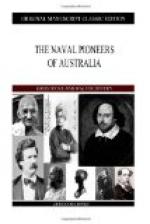“We passed thro’ the Strait of Macassar, and arrived at Batavia on the 27th of September, after a most tedious and destressing passage of twenty-six weeks, during a great part of which time we had been upon a very small ration of provision. We buried on the passage Lieutenant George William Maxwell and one seaman of the Sirius, with one belonging to the snow. My transactions at Batavia will be fully seen in the narrative. I left that place on the 20th October, and arrived at the Cape on the 17th December, but being unable to reach the proper anchorage, I was on the 20th driven to sea again, with the loss of two anchors and cables. On the 22nd we again reached the bay, with a signal of distress flying, and thro’ the exertions of Captain Bligh, who was there in the Providence, we were got into safety, and receiv’d anchors and cables from the shore. My people being very sickly, the effects of that destructive place Batavia, their slow progress in recovery detained me at the Cape longer than I intended to have staid. I sailed from Table Bay 18th January, but left five sick behind me; anchored at St. Helena 4th February, to complete our water, left that island the 13th, and arrived here late last night.”
On the way home the Waaksamheyd got into trouble with the natives of Mindanao, one of the Dutch Archipelago. The rajah of the place would not supply refreshment to the vessel, and her master threatened to fire upon the native canoes, notwithstanding the remonstrances of Hunter. In the course of the dispute the rajah lost his temper and attacked the shipmaster, whose life was saved by Hunter, but the quarrel resulted in a regular engagement between the natives and people on the ship, in which the crew of the Sirius, for their own safety, were compelled to take part. The canoes were ultimately driven off, with great loss of life to the people in them, and the Europeans escaped unhurt.
Hunter’s experience on this voyage taught him that the proper route home from Australia was not north about, nor via the Cape of Good Hope, but round the Horn, and he wrote to the Admiralty to that effect, but it was years later before sailors woke up to the fact. At the Cape of Good Hope a number of English shipwrecked sailors were prisoners of the Dutch, and Hunter’s spirited remonstrance brought about their release, and for this he was thanked by the Admiralty. A court-martial was duly held, and Hunter and the ship’s company honourably acquitted of all blame for the loss of the Sirius.
When it became apparent that Phillip’s health would not permit him to return to New South Wales, Hunter (in October, 1793), who was serving as a volunteer captain in Lord Howe’s flagship, the Queen Charlotte, applied for the position of governor of the colony, and four months later he was given the appointment. Lord Howe, who had been his constant patron, thus satisfying his desire to give Hunter an important command, and thereby depriving the sea service of a very able naval officer, neither to the advantage of Hunter nor the colony he was sent to govern.




